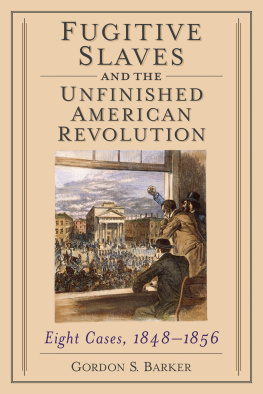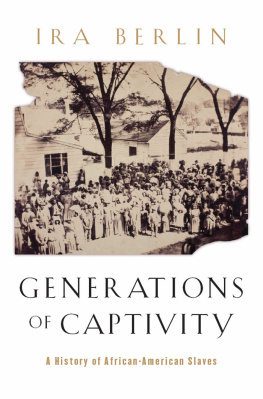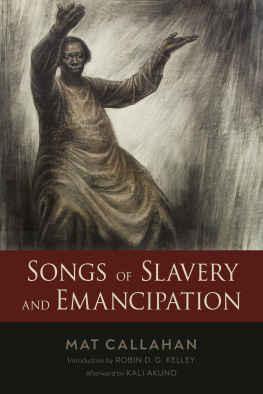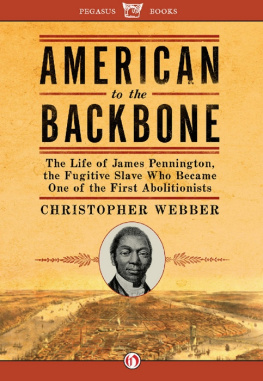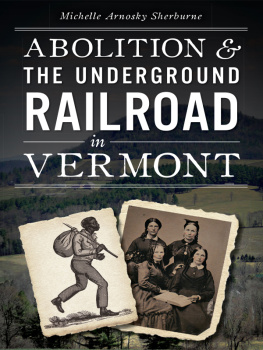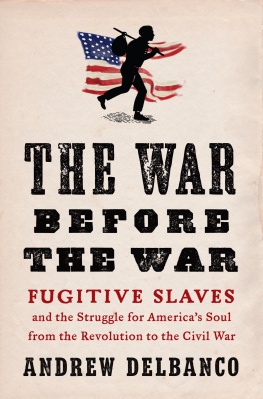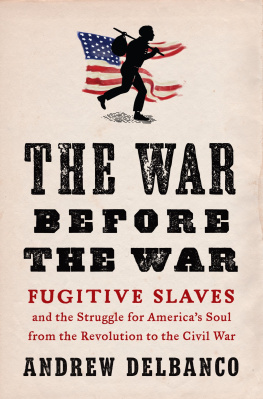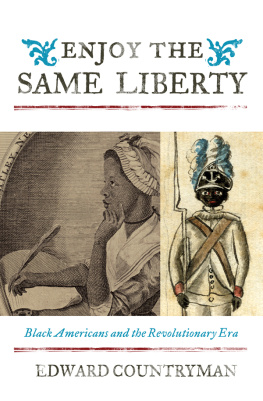
Fugitive Slaves and the Unnished American Revolution
Eight Cases, 18481856
Gordon S. Barker

McFarland & Company, Inc., Publishers
Jefferson, North Carolina, and London
LIBRARY OF CONGRESS CATALOGUING DATA ARE AVAILABLE
BRITISH LIBRARY CATALOGUING DATA ARE AVAILABLE
e-ISBN: 978-1-4766-0277-6
2013 Gordon S. Barker. All rights reserved
No part of this book may be reproduced or transmitted in any form or by any means, electronic or mechanical, including photocopying or recording, or by any information storage and retrieval system, without permission in writing from the publisher.
Front cover: Federal and state troops returning Anthony Burns (18341862) to slavery after his fugitive slave trial at the courthouse in Boston, Massachusetts, May 1854, line engraving, 19th century (Granger Collection)
McFarland & Company, Inc., Publishers
Box 611, Jefferson, North Carolina 28640
www.mcfarlandpub.com
For Charles Scott Barker and Florence Enid Eaves
My parents, my teachers
Introduction:
Fugitive Slaves and American Revolution
The Antislavery struggle is for the freedom of man, without distinction of race or color.... No matter who the man may be that shall try his hand against this movement, he will fail in the end. No matter what party may attempt to put it down; that party will be dashed in pieces. It is a rock; and whosoever shall fall thereon shall be broken, but on whomsoever it shall fall, it shall grind him to powder.Wendell Phillips
If it is the cradle of liberty, they have rocked the child to death ... one-sixth of our countrymen are clanking in chains upon the very soil which our fathers moistened with their blood.William Wells Brown
You and I prefer the peaceful method [to abolish slavery]; but I, at least, shall welcome the violent, if no other accomplish the end. So will the great mass of thoughtful good men at the North; else why do we honour the heroes of the Revolution.Theodore Parker
On July 4, 1826, the ftieth anniversary of the Declaration of Independence, Americans mourned the loss of Thomas Jefferson and John Adams, who along with George Washington had come to symbolize the birth of the Republic and the struggle for nationhood. For many Americans, their coincident deaths exactly fty years after the Declaration symbolized the passing of the Revolutionary Generation. In the North and South, Americans expressed reverence for these men who had been instrumental in establishing America in the community of nations and guided the young country through the turbulent years of the Revolution, the framing and ratication of the Constitution, and the Federalist Era when the United States experienced troubles at home and abroad, including a quasi-war with France.
The passing of the second and third presidents, however, seemed also to usher in a new era, another phase in the republican experiment. The nation had recovered from the Panic of 1819; internal improvements, including the Erie Canal, linked once disparate regions; and the country even enjoyed some renewed Good Feelings after Henry Clay brokered the Missouri Compromise bringing Missouri and Maine into the Union, thus preserving balance between slave and free states. Many white Americans surely believed the trying times that the Revolutionary Generation had wrestled with were giving way to an epoch of prosperity and harmony, which would allow the new nation to expand westward from sea to shining sea as the Democratic editor John OSullivan later put it when he coined the term Manifest Destiny. Certainly from the perspective of white males, who voted in increasing numbers after electoral reform in the 1820s, the Revolution had established a veritable Empire of Liberty, something James Monroe conrmed with his message to Congress in 1823, later dubbed the Monroe Doctrine. Written by Secretary of State John Quincy Adams, the Monroe Doctrine acknowledged the new nations uniqueness and instituted an American foreign policy for the Western hemisphere. It told Old World powers that the Americas were for Americans, the United States would tolerate no further European colonization on this side of the Atlantic, and hence European imperialists better stay away.
But on the Fourth in 1826, as Americans mourned two heroes and looked forward optimistically, they also turned to their Revolutionary legacy seeking guidance to ensure that they would walk ttingly in the footsteps of exemplary founders. Therein lay an urgent need for a grand master narrative, a history that acknowledged their heroes accomplishments and positioned the republican experiment within the broader story of human progress. Responding to this requisite, George Bancroft wrote his History of the United States portraying the Revolution as a truly heroic struggle of liberty-loving white American merchants, planters, and yeomen farmers who sought to throw off the yoke of tyranny.
Although twentieth-century historians of the progressive and imperialist schools criticized Bancrofts romantic Whig interpretation of the Revolution as they pointed to the Founders material interests or the inefciencies of imperial political and economic management, few scholars questioned his periodization until the 1980s when social history shifted the focus to ordinary Americans. For example, in Shays Rebellion: The Making of an Agrarian Insurrection, David P. Szatmary described ordinary folk in the 1790s still in search of benets in the new social and political order. About the same time, Mary Beth Norton and Linda Kerber published seminal works addressing challenges confronting late eighteenth-century women. Not long after, in Race and Revolution, Gary Nash examined the Revolutionary Generations failure to extend liberties to black Americans, implicitly demonstrating that the Revolution had yet to be completed.
As the 1990s progressed, such concerns loomed larger, further undermining acceptance of Bancrofts periodization. In Radicalism of the American Revolution, Gordon S. Wood argued that the Revolution must be interpreted as a deep-rooted social, political, and cultural transformation that spanned some one hundred years from the 1740s through to the Age of Andrew Jackson. The Revolution, contended Wood, represented more than the military conict that began with shots red at Lexington and Concord and ended with the Treaty of Paris. Even Woods critics who voiced concerns in the William and Mary Quarterlys forum on his work agreed with him on this point. The Revolution, they stress, reected the determination of ordinary sorts to shape their world; the revolutionary die had not been cast by virtuous, enlightened white merchants, planters, and yeomen farmers.
In many ways, it is surprising that scholars of African American history did not contest Bancrofts periodization earlier. In the nineteenth century, William Cooper Nell, William Wells Brown, and George Washington Williams focused primarily on the heroic contributions of African Americans who partook of the Spirit of 76. The African Americans splendid behavior on all the battleelds of the Revolution, wrote Williams, proved that the Negro soldier fought his way to undimmed glory, and made for himself a magnicent record in the annals of American history.
Twentieth-century African American historians concerned with the collective experience of blacks rather than individual heroism also did not challenge the usual periodization, even as they stressed blacks continuing search for freedom, a quest not conned to the Revolutions traditionally dened time frame. Herbert Aptheker shifted from addressing the contribution of black patriots to studying enslaved blacks who ed to the British with one set purposethe achievement of liberty but he did not contest the Revolutions periodization. Neither did John Hope Franklin or Benjamin Quarles in his masterful work,
Next page
